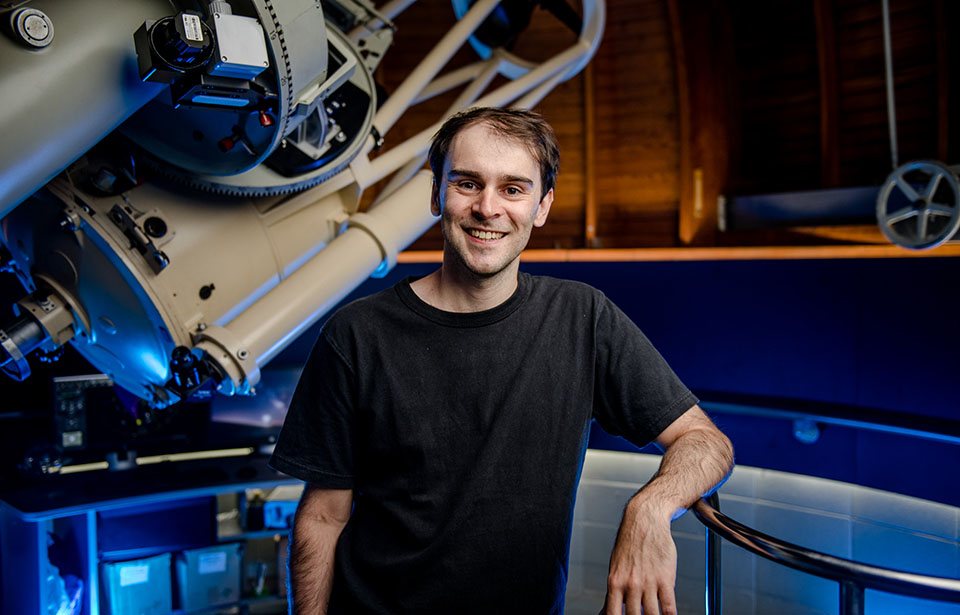Tonight's blue supermoon explained
• August 30, 2023

A supermoon photographed by Auckland Stardome astronomer Josh Aoraki.jpg
New Zealanders will be able to look up at the night sky tonight and see a blue supermoon, one of the brightest and largest moons of 2023.
This “rare phenomenon”, according to the Auckland Stardome and the Smithsonian Magazine, only happens on average every 10 years.
A supermoon occurs when the natural satellite travels closer to the Earth, giving the illusion it is much larger than usual.
This particular moon will be more than 27,000km closer to Earth than its average distance of 384,00km.
“[It] happens every year, and you typically get two to three supermoons,” says Auckland’s Stardome Observatory Planetarium astronomer Rob Davison.
“Supermoon is not a technical term, I should say, but it's shorthand for when you have a full moon that coincides with when the moon is as close to Earth as it can be.
“Sometimes the moon can be closer to the Earth because it orbits in an elliptical orbit. . . not circular,” says Professor Sergei Gulyaev of the Institute for Radio Astronomy and Space Research at Auckland University of Technology.
“So sometimes the moon is a little bit closer to the Earth, sometimes a little bit farther.”

Stardome Observatory Planetarium astronomer Rob Davison. Photo: supplied
Despite its name, a blue moon will not actually be blue.
“A blue moon is really a quirk of the calendar,” says Davison.
“We call it [a] blue moon when we have two full moons during one month,” Gulyaev says.
“The period between two full moons is 29 and a half days, and our month sometimes [has] 31 days.”
“So we had one right at the beginning of August, and then we have one more at the end of August,” says Davison.
“That happens every two to three years.”
It has been roughly 14 years since the last blue supermoon in 2009, and we won’t experience another until 2032.
“So to get a blue moon and a supermoon at the same time, of course, is rarer still,” Davison says.
“It doesn't follow an exact pattern, but typically, once a decade or so seems to be the consensus of how often they occur.”
According to Davison, the peak of fullness will occur at 1.30pm on Thursday, which we won’t be able to see.
He says that the best “time to see it when it is at its most full and. . . super” will be the early morning hours and early evening of Thursday August 31.
“I would just say if people are wanting to see it, it might look [the] most impressive when it’s low down, just after it's risen, or just before it sets,” he says.
“Not because it's actually any closer, but because you have those points of reference like trees and buildings and hills to compare it to; it has that effect of looking even bigger and more impressive than when it's up above.”

Supporters hope new council will save Western Springs Speedway
Savannah Lendich Jonkers • October 8, 2025


‘Strong, proud and skilled' - Māori tradeswomen use social media to inspire other wāhine
Haley Doig • June 26, 2025

Supporters hope new council will save Western Springs Speedway
Savannah Lendich Jonkers • October 8, 2025

